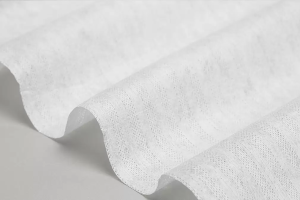Textiles come in many forms, and understanding the differences between them helps in selecting the right material for various uses. Among these, 100 non-woven fabric has gained popularity for its versatility, while 100 pure cotton fabric remains a preferred choice for comfort and breathability. At Winner Nonwovens, we provide high-quality materials that meet different industrial and consumer needs. In this article, we explore what non-woven fabric is and how it compares to traditional cotton fabrics.
Defining Non Woven Fabric
Non woven fabric is a type of textile that is made by bonding fibers together through mechanical, chemical, or thermal processes rather than weaving or knitting. Unlike 100 %pure cotton fabric, which is created by interlacing threads, non-woven fabric forms a cohesive sheet directly from fibers. This construction gives non-woven fabrics unique properties such as strength, flexibility, and uniformity. Non woven textiles are often lightweight and can be produced in a variety of thicknesses and densities.
Characteristics of 100 Non Woven Fabric
100 non–woven fabric has several notable features that make it suitable for a wide range of applications. It is strong yet lightweight, allowing it to be used in disposable and reusable products alike. Its uniform structure provides consistent performance across the material, and it can be engineered for specific properties such as water resistance, filtration, or softness. While 100 %pure cotton fabric is valued for its natural texture and comfort, non-woven fabric excels in functional qualities that are difficult to achieve with traditional woven textiles.
Applications Across Industries
Non woven fabric is highly versatile and finds use in multiple sectors. In the medical and hygiene industries, it is used for masks, surgical gowns, and wipes due to its strength and filtration capabilities. In home and industrial applications, non-woven textiles serve as protective covers, geotextiles, and packaging materials. Meanwhile, 100 %pure cotton fabric continues to be favored for clothing, bedding, and items that require breathability and softness. Together, these materials address different needs in both everyday and specialized uses.
Comparing Non Woven Fabric and Cotton
While 100 %non-woven fabric and 100 pure cotton fabric are both made from fibers, the methods of production and resulting properties differ significantly. Non woven fabric is created by bonding fibers into a sheet, offering durability and functional versatility. Cotton fabric is woven or knitted, providing comfort, softness, and natural absorbency. Choosing between these materials depends on the intended purpose, with non-woven fabric suited for functional and protective uses, and cotton ideal for comfort-focused products.
Conclusion
Understanding non-woven fabric allows us to appreciate the diversity of textiles available for different applications. At Winner Nonwovens, we provide both 100 non-woven fabric and 100 %pure cotton fabric, ensuring that our customers can select the right material for their needs. Non woven fabrics offer strength, uniformity, and specialized functionality, while pure cotton provides natural comfort and breathability. By knowing the characteristics and uses of each type, you can make informed decisions and achieve the best results for your projects.











